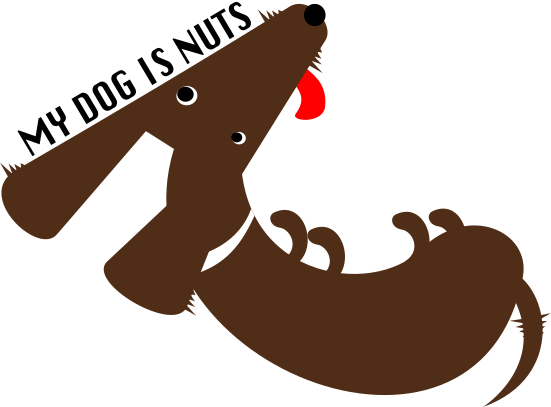You’ve packed your treat pouch. You’ve shown up to training class. Your dog…looks away and starts sniffing the floor. You call them—they sniff harder, clearly hoping to find something actually worth working for, left behind by the puppy before them. Sounds familiar?
One of the most common things I see in class is a mismatch between the treats owners bring and what their dogs actually finds motivating.
What does “bring high-value treats” actually mean to an owner—and are we, as trainers, failing to explain this clearly enough?
Well-meaning owners head to the pet shop and arrive with dry, crunchy, mass-produced biscuits. These might technically be labelled “training treats,” but your dog may disagree—and that disagreement matters.
So let’s shed some light on the mystery of the high-value treat.
What Are High-Value Treats, Really?
“High value” isn’t a brand or a marketing term. It’s not about price, fancy packaging, or whether it says “natural” or “premium” on the front. High-value treats are the ones your dog will enthusiastically work to earn, even in a distracting environment.
The best ones tend to be:
- Soft – so they don’t bounce across the floor, take time to chew or crumble into bits (Sorry, previous owner, you tasty treats left crumbs – you might want to rethink your treat choice too!). Your dog can grab and eat them quickly, keeping the training session flowing.
- Smelly – stronger scents mean easier to detect and often more appealing to dogs. Think cheese, fish, or fresh meat.
- Moist – often a sign that the treat contains real meat, cheese, or other rich ingredients, making it more palatable. If unsure, ask yourself: would I feel OK feeding it after reading the ingredients list?
- Human-grade or homemade – things like chopped roast chicken, ham, cheese cubes, or liver cake.
Why This Matters
Training is a learning process. When your dog is surrounded by new smells, sights, and sounds—like in a class or the park—you’re competing with the environment. If the reward you’re offering isn’t worth the effort, your dog will tune out. It’s not that they’re stubborn or untrained—it’s that the payoff doesn’t match the challenge.
A Quick Human Comparison
Imagine I ask you to help me move house on a Saturday. In return, I offer you… a bag of crisps. I know you like crisps, sure – on the sofa, in front of the telly. But are you tempted to give up your weekend and lift heavy furniture for a bag of crisps?
Now imagine I offer you a pub meal, a bottle of wine, or a coffee and cake in your favourite café. Getting warmer?
That’s what I mean as a trainer when I talk about motivation. What your dog finds motivating—in that particular environment—matters.
The Treat Test: Let Your Dog Decide
Still not sure what counts as high value for your dog? Set up a taste test – it’s fun!
Offer small amounts of different options at the same time — kibble, pet shop training treats, raw vegetables, mild cheese, cooked chicken, liver cake or paste, cocktail sausages, tinned fish or dried sprats, ham—and watch what your dog chooses first. Their behaviour will tell you everything you need to know.
Check out the video of me doing this with my own dog:
https://www.facebook.com/reel/1645978946089177
https://www.instagram.com/reel/DLU0W2Ot1t4/?utm_source=ig_web_copy_link&igsh=MzRlODBiNWFlZA==
Still bring some of the lower-value treats too—you can mix them in and use them strategically. But in busy environments, when you’re building new behaviours or working on recall, bring out “the big guns“.
Final Thought – It’s Not Just What You Bring, But How
Your dog isn’t being difficult if they turn their nose up at your treats. They’re just giving you honest feedback. Great training is a conversation, and that starts with listening. The more you pay attention to what truly motivates your dog, the easier training becomes—for both of you.
So let’s talk logistics. Even when owners do bring the right treats, I often see two common problems in class:
- The treats are in a rustling plastic bag that’s awkward to open, and
- The treats are too big or sticky and not pre-cut.
Here’s why that matters.
Timing is critical in dog training. When your dog does something you like— a sit, eye contact, or recall— you’ve got about 1–2 seconds to deliver the reward for them to associate the treat with their action. If you’re fumbling with a bag or trying to tear a sausage into chunks, you’ve missed the moment. The learning weakens, and frustration builds for both of you.
I always recommend using a treat pouch worn on your belt or clipped to your waistband. You can also put the loose treats straight in your pocket. It keeps your hands free, allows for quick access, and is silent. You can deliver a treat within a second, mark with a clicker or a “yes,” and move on smoothly.
And make sure treats are cut to pea-sized pieces—yes, even the good stuff! You’ll need dozens of repetitions in a single session, and your dog won’t work well with a full sausage in their mouth every time. And how many sausages later would your tiny dog be full and lose interest in training?
In class, I often demonstrate how much faster training progresses when I can reinforce behaviour immediately—and with something the dog really wants.
So if you’ve ever felt like your dog “won’t listen” in training, it might not be about the behaviour at all—it might be the timing, delivery, and quality of the reinforcement.


